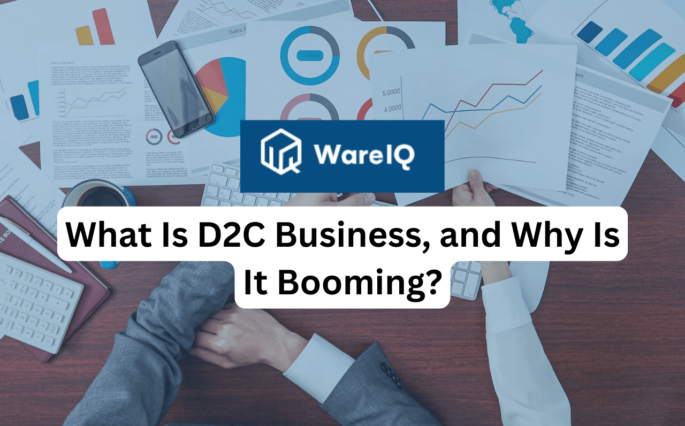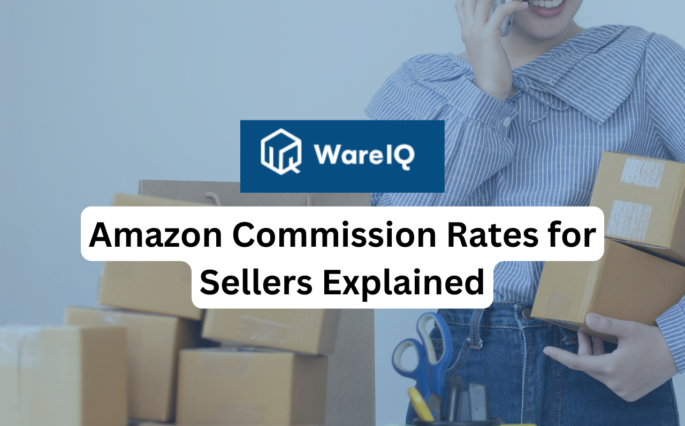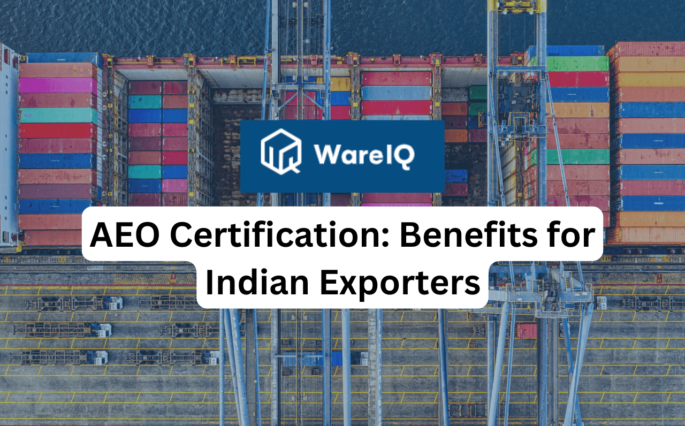APOB for Myntra: Setting Up APOB for GST on Myntra

Setting up an Additional Place of Business (APOB) under the Goods and Services Tax (GST) framework is critical for online sellers aiming to expand their operations across multiple locations. For sellers on Myntra, one of India’s leading e-commerce platforms specialising in fashion and lifestyle products, understanding the GST requirements for APOB is essential for ensuring legal compliance and smooth business operations.
This article aims to provide a comprehensive guide on setting up APOB for Myntra under the GST. It covers everything from the basics of Myntra and the registration process to the specifics of APOB and how it impacts sellers. Understanding these requirements allows Myntra sellers to better manage their logistics, storage, and distribution processes, leading to a more efficient and compliant business model.
This detailed exploration will help current and prospective Myntra sellers navigate the complexities of GST regulations, enabling them to confidently focus on growing their business.
- Everything About Myntra
- What Is the Registration Process of Myntra?
- What Is APOB on Myntra?
- Demystifying APOB in GST
- How to Become a Seller on Myntra?
- Conclusion
- FAQs About APOB for Myntra
- What is the significance of registering an Additional Place of Business (APOB) under GST for Myntra sellers?
- What documents are required to register an Additional Place of Business under GST?
- How does GST registration impact the overall business operations of Myntra sellers?
- What is the process of becoming a seller on Myntra?
- How does having an APOB benefit Myntra sellers?
Everything About Myntra
Myntra is a prominent Indian e-commerce platform specialising in fashion and lifestyle products. Founded in 2007 and headquartered in Bengaluru, Myntra has evolved from a retailer of personalised gift items to one of the largest online fashion retailers in the country. The platform offers a wide range of products, including clothing, footwear, accessories, and home decor, from both domestic and international brands.
Myntra’s user-friendly interface, extensive product catalogue, and various promotional offers have made it a preferred shopping destination for millions of customers. In 2014, Myntra was acquired by Flipkart, further strengthening its market position. Myntra’s business model focuses on providing a seamless shopping experience through features like personalised recommendations, easy returns, and multiple payment options.
Additionally, Myntra hosts an annual shopping event called ‘End of Reason Sale,’ which attracts a significant number of buyers. Myntra offers sellers an excellent opportunity to reach a vast customer base and grow their business by leveraging the platform’s robust infrastructure and marketing capabilities.
What Is the Registration Process of Myntra?
Registering as a seller on Myntra involves a series of steps designed to ensure that only credible and quality vendors join the platform. Here’s a detailed guide to the Myntra registration process:
- Initial Inquiry: Visit the Myntra seller registration page and fill out the initial inquiry form with basic information such as your name, contact details, and business type.
- Documentation: Gather all necessary documents, including your GST registration certificate, PAN card, bank account details, and proof of address. These documents are essential for verifying your business and complying with tax regulations.
- Profile Creation: Once the initial inquiry is approved, create your seller profile by providing detailed business information, including product categories, inventory details, and logistics capabilities.
- Agreement Signing: Review and sign the seller agreement, which outlines the terms and conditions of selling on Myntra. This agreement ensures that you understand your obligations and the platform’s policies.
- Catalogue Upload: Prepare and upload your product catalogue, including high-quality images, detailed descriptions, and pricing information. Myntra provides guidelines to help you optimise your product listings.
- Quality Check: Myntra conducts a quality check of your product listings to ensure they meet the platform’s standards. This step may involve verifying product descriptions, images, and prices.
- Launch: Once your catalogue is approved, your products go live on Myntra. You can start receiving orders, managing inventory, and handling customer inquiries through the seller dashboard.
The registration process is designed to be thorough yet straightforward, ensuring that sellers are well-prepared to meet the platform’s standards and deliver a high-quality shopping experience to customers.
What Is APOB on Myntra?
Under the GST framework, APOB, or Additional Place of Business, refers to any location other than the principal place of business where business activities are carried out. For Myntra sellers, this could include warehouses, distribution centres, or any additional storage facilities used to manage and dispatch inventory. Registering an APOB is a legal requirement under GST regulations to ensure that all business premises are officially recognised and compliant with tax laws.
This registration helps maintain accurate inventory and sales records across multiple locations, facilitating smooth logistics and transparent operations. For Myntra sellers, having an APOB can enhance operational efficiency by enabling better product distribution, reducing delivery times, and improving overall customer satisfaction. The process involves declaring the additional place during GST registration or amending the existing registration through the GST portal, accompanied by the necessary documentation to verify the additional location.
Demystifying APOB in GST
The full form of APOB is Additional Place of Business. In the context of GST, it denotes any place other than the principal place of business where a business entity carries out its operations. This includes warehouses, godowns, branch offices, or other premises for storing goods, manufacturing, or providing services. Registering these additional places is crucial for businesses to ensure compliance with GST regulations.
The registration of APOB helps in properly accounting and reporting inventory and transactions from all business locations. It also facilitates seamless movement of goods between different locations without legal hassles, ensuring that tax authorities recognise all premises. The documentation required for registering an APOB typically includes proof of address, rental or lease agreements, consent letters from the property owner, and utility bills. Ensuring all business locations are registered under GST is essential for maintaining transparency and avoiding penalties.
How to Become a Seller on Myntra?
Becoming a seller on Myntra involves a series of steps to ensure that vendors meet the platform’s standards and are prepared to offer high-quality products and services. Here’s how you can become a seller on Myntra:
- Initial Inquiry: Visit the Myntra seller registration portal and fill out the inquiry form with your business details, including your name, contact information, and business type.
- Document Submission: Prepare and submit the required documents, such as your GST registration certificate, PAN card, bank account details, and address proof. These documents are essential for verifying your business and ensuring compliance with tax laws.
- Profile Setup: Create a detailed seller profile by providing information about your business, including product categories, inventory details, and logistics capabilities.
- Agreement Signing: Review and sign the seller agreement, which outlines the terms and conditions of selling on Myntra. This ensures you understand and agree to the platform’s policies and standards.
- Catalogue Upload: Prepare and upload your product catalogue, including high-quality images, detailed descriptions, and pricing information. Myntra provides guidelines to help you optimise your listings for better visibility and sales.
- Quality Check: Myntra conducts a quality check of your product listings to ensure they meet the platform’s standards. This step ensures that your products are accurately described and presented.
- Go Live: Once your catalogue is approved, your products will go live on the Myntra platform. Through the seller dashboard, you can start receiving orders, managing inventory, and handling customer inquiries.
By following these steps, you can become a seller on Myntra and tap into a vast customer base, leveraging the platform’s extensive reach and robust infrastructure.
Conclusion
Understanding and complying with the GST requirements for APOB is crucial for Myntra sellers to ensure smooth business operations and legal compliance. Setting up an APOB involves a series of steps, including proper documentation and registration, which help maintain accurate records of inventory and transactions across multiple locations. For sellers on Myntra, having an additional place of business can significantly enhance operational efficiency by improving logistics, reducing delivery times, and ensuring better inventory management. By following the outlined registration processes and meeting all legal requirements, Myntra sellers can focus on expanding their business, reaching more customers, and providing a seamless shopping experience.
Setting up APOB for GST on Myntra is about compliance and optimising business operations for better efficiency and customer satisfaction. Staying informed about regulatory changes and requirements is essential for sustained growth in the competitive e-commerce landscape. With the right approach and adherence to GST regulations, Myntra sellers can achieve their business goals while maintaining transparency and legal compliance.
You may also like to read: APOB Vs PPOB
FAQs About APOB for Myntra
What is the significance of registering an Additional Place of Business (APOB) under GST for Myntra sellers?
Registering an APOB ensures that all business locations are legally recognised and compliant with GST regulations. This facilitates smooth operations, accurate tax reporting, and seamless movement of goods between different locations.
What documents are required to register an Additional Place of Business under GST?
Key documents include proof of address (ownership documents or rental agreement), consent letter (if applicable), recent utility bills, NOC from the property owner (if applicable), and photographs of the premises.
How does GST registration impact the overall business operations of Myntra sellers?
GST registration is crucial for legal compliance, allowing sellers to claim input tax credits, manage inventory efficiently, and maintain transparent business operations. It also enhances credibility with customers and suppliers.
What is the process of becoming a seller on Myntra?
The process involves initial inquiry, document submission, profile setup, agreement signing, catalogue upload, quality check, and finally, going live on the platform to start receiving orders and managing inventory.
How does having an APOB benefit Myntra sellers?
Having an APOB enhances operational efficiency by enabling better product distribution, reducing delivery times, and improving overall customer satisfaction. It also ensures legal compliance and accurate tax reporting.








